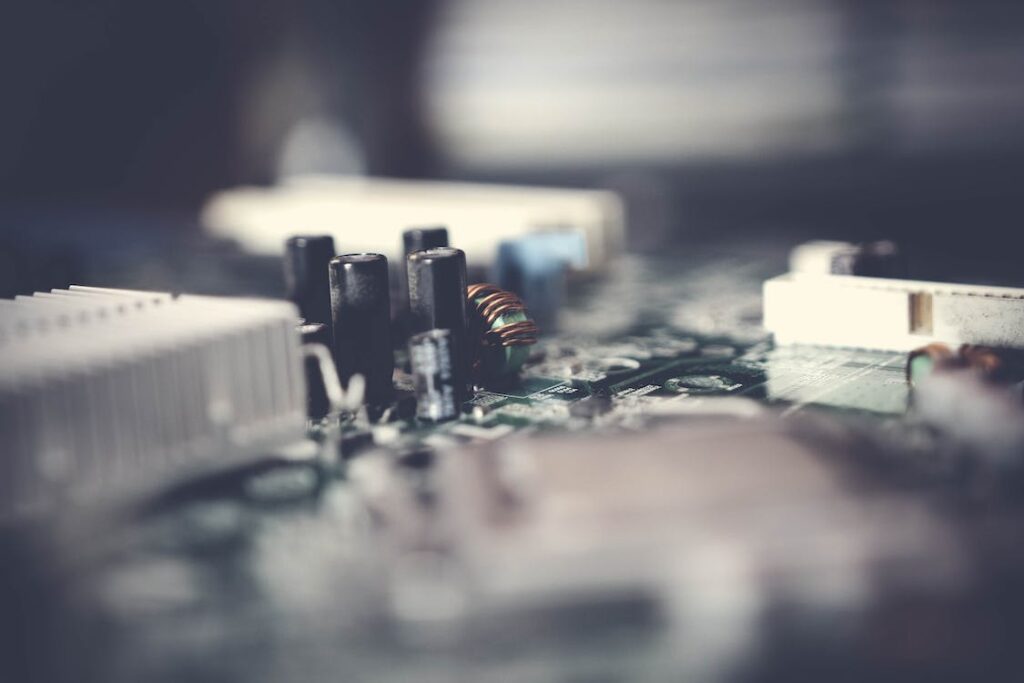Contact
Write to Us And We Would Be Happy to Advise You.
Do you have any questions, or would you like to speak directly with a representative?
By ren
Printed circuit boards (PCBs) need an additional polish to improve their qualities. Although there are other options, Immersion silver PCB is the most common. Even professionals could have trouble carrying out the procedure or contrasting it with other accessible solutions.
Let's examine the immersion silver method in more detail, identify its benefits, go through typical issues, and contrast it with ENIG.
It is one of the common finishes that may be applied to a typical PCB and is also referred to as IM silver, silver plating, and ENIG. Approximately one-tenth of all PCBs are created using this method. And that's a lot given that the majority of inexpensive components often lack any kind of surface polish.

The surface integrity of a PCB is essential. It is thus because it receives the majority of external impact. PCB is shielded by an immersion silver coating, which reduces its susceptibility to oxidation, temperature changes, mechanical strains, etc. The procedure primarily aims to increase the durability of a PCB.
Let's divide the procedure into two sections, the application process and the functioning concept, and examine each independently.
Therefore, it is the chemical process that deposits a tiny coating of silver on the copper foil of the PCB. The equation is as follows: Cu2+ + 2Ag+ = Ag+ Cu2+;
Simply put, two electrons are released into the silver solution as a result of the partial dissolution of copper from the surface. The previously dissolved silver then takes electrons to return to its metallic form and settle on the copper surface of a PCB.
In case you're interested in how much silver replaces copper. The coating is only between 0.1 and 0.4 m thick. Still, it is more than enough to completely exhibit silver's qualities.
Now that we have that out of the way, let's go through the whole step-by-step PCB immersion silver procedure:
Your PCBs are now ready for inspection and packing whenever you're done. But the silver coating can be an issue for you. For instance, it is applied too thinly or not enough. Here are some things to address and keep in mind for the future.
Some of the benefits of an Immersion silver PCB surface treatment were previously mentioned in the section before this one. But in this part, we'll go through each benefit in more depth.
Immersion silver has excellent conductivity, which makes it the ideal material for high-speed signal applications.
Along with the aforementioned challenges, two more frequent problems might arise while silver-plating PCBs.
The "crevice" corrosion mechanism and this problem have certain similarities. Usually, during immersion, silver oxidation (dissolving of copper) and reduction of silver ions and their depositing are carried out concurrently. Both the anode and cathode layers are made of copper. This results in a consistent solver coating on the copper surface of the PCB.
The supply of silver, however, degrades if a copper layer gap develops as a result of mechanical stress or corrosion. Additionally, the copper in the gap functions as an anode, supplying electrons for the silver-silver reactions. The copper pads, which were supposed to be covered, end up with silver deposited on them. A PCB begins to malfunction as a result.
You should think about the following suggestions to lessen the chance that the Galvanic Effect may occur:
During deployment, immersion silver technology is still susceptible to flaws. Solderability is only one of them. Inadequate hole wall quality is the primary cause of difficulties with IC Holes and PADs. Usually, it has large holes or copper that isn't thick enough. The overall solderability of the components suffers as a consequence. This challenge is somewhat related to the Galvanic Effect.
It is important to carry out copper etching and silver plating correctly. So they can guarantee that a solder mask is properly created and cured, as well as fully avoid solderability issues. You should take into account the following tips in addition to the ones previously mentioned about preventing the Galvanic impact.
For an effective immersion silver coating to be applied, a PCB's surface must be 100% copper. Each tank has to be large enough to successfully exchange electrons between the copper layer and the saturated silver liquid.
Controlling the pace of micro-etching is also essential. It prevents the copper layer from oxidizing too much and creating poor-quality holes. For the uniformity of micro-etching, you should avoid connecting big copper surfaces with tiny lines.
In order to avoid solderability concerns, please consider the following supplementary advice while producing immersion silver PCBs:
Electroless Nickel/Immersion Gold finishing is referred to as ENIG. It is sometimes seen as a more costly but technologically superior variant of silver plating.
Simply said, ENIG plating involves protecting the copper pads on PCBs with nickel and then coating the exposed copper with a thin layer of gold. The method is much the same as immersion silver processing. However, it improves PCBs with better surface planarity, better solderability, and increased oxidation resistance.
Read more: HDI any-layer printed circuit boards
ENIG is somewhat more expensive than Immersion silver PCB. It is an excellent option if the PCB has to meet functional connection criteria while lowering expenses. In many circumstances, Immersion Silver is seen to be the best choice due to its superior flatness and joint strength. In terms of functional performance, Immersion Silver is a transitional technology between OSP and ENIG. The enhanced ease of assembly and inspectability of the Immersion Silver treatment are reasons why EuropePCB promotes it.
Do you have any questions, or would you like to speak directly with a representative?